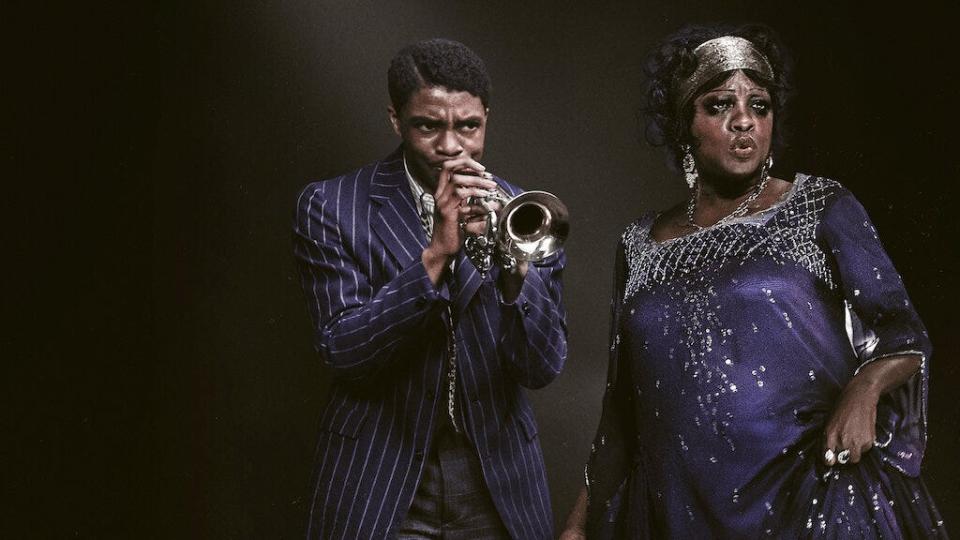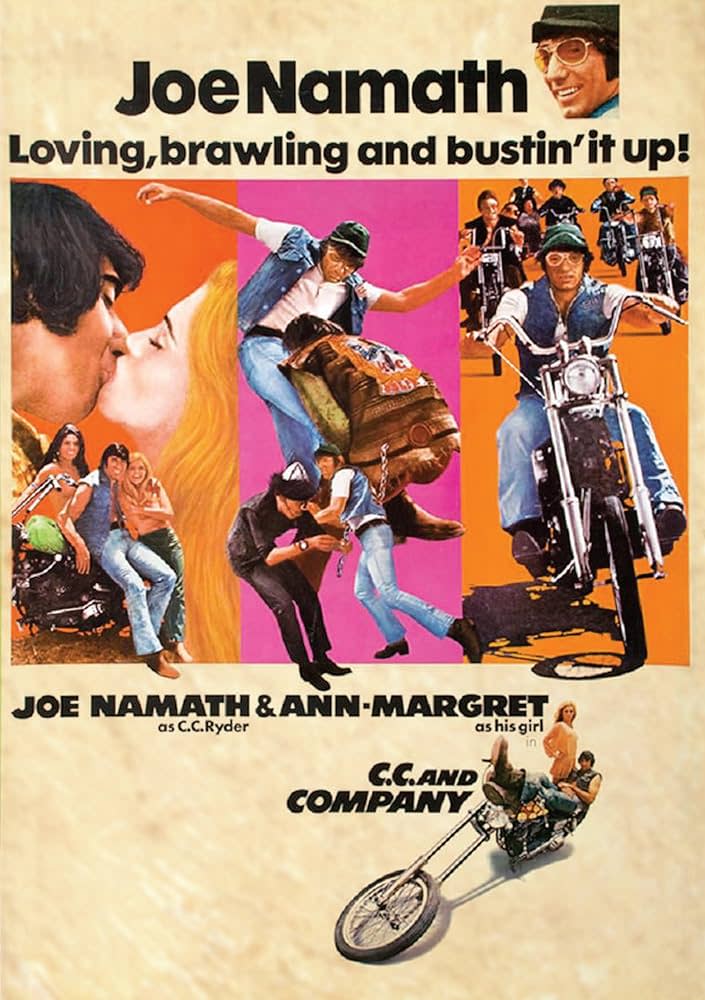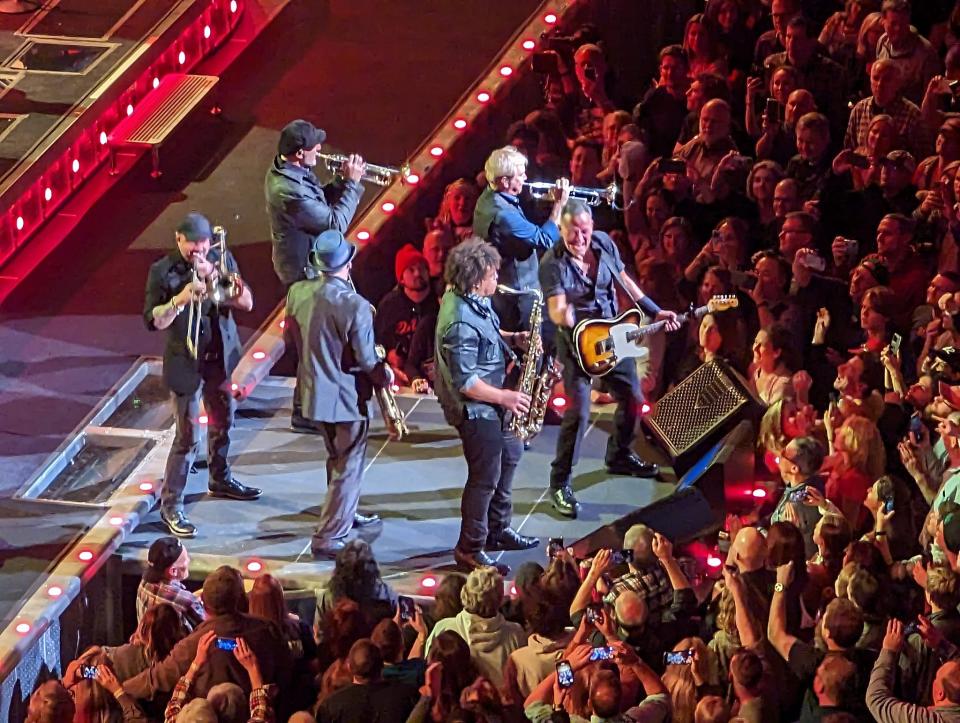See see Bruce Springsteen's rider. See-see what time has done | MARK HUGHES COBB
- Oops!Something went wrong.Please try again later.
- Oops!Something went wrong.Please try again later.
- Oops!Something went wrong.Please try again later.
See. See rider?
Gertrude "Ma" Rainey, she of the Black Bottom. ... This requires a clarity moment. The Black Bottom was a '20s-originated dance, named for an area of Detroit, though popular with Southern people of color.
Legendary ragtime and jazz pianist/composer Jelly Roll Morton wrote and recorded "Black Bottom Stomp" in 1925. It was originally titled "Queen of Spades."
We need another moment.
More: Martin Scorcese continues bemoaning his cape fear | MARK HUGHES COBB
Aside from being a horrendous misunderstanding of Sting's "King of Suede," or "Jimmy Page," or whatever it was he whined — whone? — it's also the title of a story by Pushkin, an opera by Tchaikovsky, a score by Prokofiev, several movies, a novel or two, and a song by freaking Styx.
But. Should we say ....?

Ma Rainey and her big, um, voice, cut 12-bar "See See Rider Blues" a year before Morton's stomp, which partly inspired the 1927 hit "Ma Rainey's Black Bottom." That became the title of August Wilson's play about "The Mother of the Blues," adapted into the 2020 film, for which Viola Davis and Chadwick Boseman won best actor Oscars.
Rainey co-wrote "See See Rider Blues," later sung as "C.C. Rider," "See See Rider" or "Easy Rider," about peacing out on a faded, failed, unfaithful lover. It's basically "By the Time I Get to Phoenix," but you can rawk to it:
"Oh see; see see riderOh see what you have done."
The way it's drawled, we're meant to hear "easy," slang for those blessed with readily obtained affection. Shelton Brooks' 1913 "I Wonder Where My Easy Rider's Gone?" sings the blues of Susie Johnson, in love with a jockey named Lee, who urges her to place all her simoleons on his nag, then amscrays with the loot. Or was the earlier derivation from a one-string fiddle player Big Bill Broonzy recalled hearing, a former slave known as See See Rider?
Tangled roots, verdant forest.

And let's not forget the song's famous movie iteration: Talking of course about "C.C. and Company," starring Broadway Joe as biker C.C. Ryder, Ann-Margret as a fashion journalist, and musicians Wayne Cochran and the C.C. Riders. There's this motocross race, you see, crossed with a fashion shoot .... 1970. 'Nuff said?
What does this have to do with Ma? Well, as the poster says "Loving, brawling, and bustin' it up!" Fascinating that they chose "loving," and "brawling," but then went "bustin'." Either there's formal loving and brawling, followed by business casual bustin', or the font was already set and drying as their poster ran out of space.
Written by Ann-Margret's husband Roger Smith — In a precursor of Blake Edwards directing his wife, Julie Andrews, to Poppin' out in "S.O.B.," Smith wrote a semi-raunchy nude scene, and embarrassingly juvenile dialogue, for his wife — "C.C. and Company" is remembered, if it is, as an oddity of bustin' badness.
Vincent Canby of The New York Times: "... the picture to name when someone asks you to recommend 'a good bad movie.' " Me, I throw up Norman Mailer's invidiously execrable "Tough Guys Don't Dance," but that came long after Joe Namath had settled back into the pocket of sexy TV ads, sexy show hosting, and sexy cameos as Joe Namath.
LaVern Baker rocked "See See Rider" up in 1963, then Mitch Ryder and the Detroit Wheels took it top 10 in 1965 as part of the "Jenny Take a Ride" medley. Elvis and the Animals — separately — also cut versions of "See See" or "C.C.," and so on. But I first felt its electricity via pal Bruce Springsteen, who'd end epic E Street Band live shows with what he dubbed the "Detroit Medley," celebrating Mitch's jams by slamming together "Good Golly Miss Molly," "Devil with a Blue Dress On," "Jenny Take a Ride" and "C.C. Rider."

So, see, here's the tip of this branch of the "C.C." tree. When I first saw Bruce, and band, saw through "See See," I was a kid, and he was late 20s. Ish. I wasn't ahead of the Boss-curve, but trying to catch up fast, so when in 1984 he bustin'ed out full mainstream with glossy, and yet apparently tough for GOPoliticians to understand as a slam on folks such as themselves who ignore the plights of veterans, "Born in the U.S.A.," I was OK with my dude selling up. As much as the sound production's brighter pop sheen, people saw-saw Bruce's blue-jeaned bottom on the cover, shot by Annie Liebovitz, and remarked on his buff bod.
Some thought his workouts must be ego, polishing the image, part of an industry machine, but to me, it looked like a guy who'd hit early middle age, yet wanted to keep playing four-hour-a-night marathon tent revivals.
Bruce recently turned 74, an age at which many are not only retired but long ago so, and despite postponing shows to deal with peptic ulcer disease, still looks, seems and performs rugged. But you see, see his rider, it shows: Seafood and soup. Towels, couches and plants. No cheap American lagers. Lemon juice, toaster and kettle; hard-boiled eggs with yolks removed; peeled and sliced apples, cubed watermelon and four bottles each of Congo Pear, Costa Rica Clementine and Kula Watermelon drinks.
More: See see Springsteen's rider
He also earns a "more than regular" manicure, which, man, if you'd ever played guitar for hours every night, as I sometimes have, you DREAM of getting even a regular, much less more than regular, hand, er, treatment.
And his rider also calls for a massage therapist, Swedish (Ann-Margret, for preference) and deep-tissue.
Just as the century-old "See See Rider" evolved, verse by verse, from lament to exaltation ― You suck, I'm gone; Lost the best bott ... lover you ever gon' have ― so must our body-machines, and their maintenance contracts.
Massages, manicures, mellow food, soothing juices? Though I only play on the while, those are things I'd love to see, see? It's rock 'n' roll ridering for those who will not fade away.
Reach Tusk Editor Mark Hughes Cobb at mark.cobb@tuscaloosanews.com.
This article originally appeared on The Tuscaloosa News: See See Bruce Springsteen's rider | MARK HUGHES COBB

